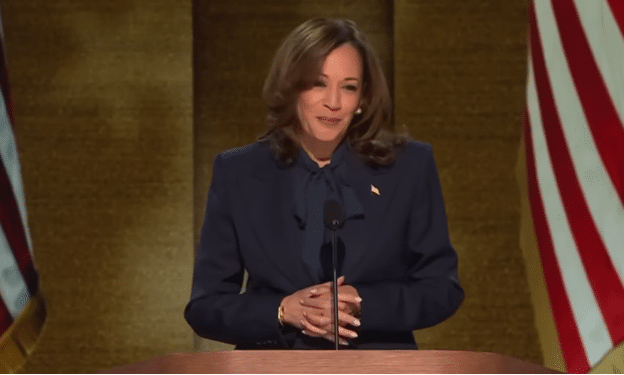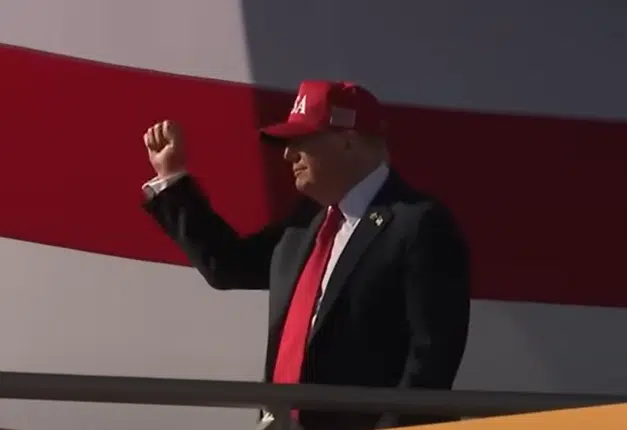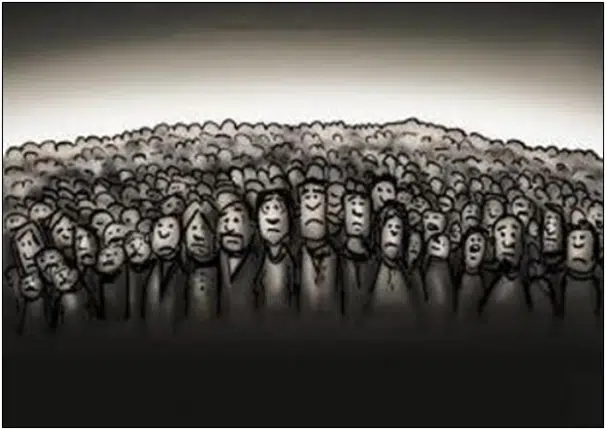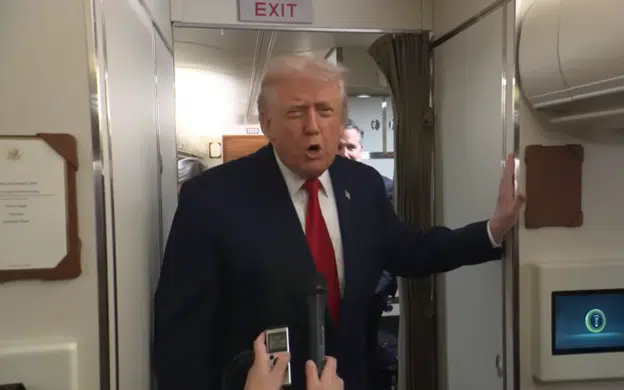
The North American Free Trade Agreement (NAFTA) was initially proposed by former President George H.W. Bush in 1992 — leading to his defeat at the hands of former President Bill Clinton and third-party candidate Ross Perot — and was signed into law by Clinton in 1993, with the support of current President Joe Biden, who voted for it when he was Senator from Delaware.
It was easily one of the most unpopular trade agreements in U.S. history — it certainly catapulted Perot’s campaign, who garnered 15 percent of the popular vote in 1992 — leading to largely tariff-free trade between the U.S., Canada and Mexico that Perot warned “there will be a giant sucking sound going south…” as jobs would be lost.
Years later, the bipartisan push for trade liberalization in Washington, D.C. led Clinton to grant permanent normal trade relations with China in 2000, again, with the support of Biden, and former President George W. Bush to allow China to be inducted into the World Trade Organization in 2001.
In 2015, the Economic Policy Institute did a study noting that despite promises of trade surpluses and more jobs, under NAFTA, trade deficits particularly with Mexico exploded as factories were outsourced and hundreds of thousands of jobs were lost: “Between 1993 (before NAFTA took effect) and 2013, the U.S. trade deficit with Mexico and Canada increased from $17.0 billion to $177.2 billion, displacing more than 850,000 U.S. jobs. Growing trade deficits and job displacement, especially between the United States and Mexico, were the result of a surge in outsourcing of production by U.S. and other foreign investors. The rise in outsourcing was fueled, in turn, by a surge in foreign direct investment (FDI) into Mexico, which increased by more than 150 percent in the post-NAFTA period.”
It was this record that helped former President Donald Trump to win the 2016 election in the Rust Belt states of Pennsylvania, Michigan and Wisconsin, who, true to his word, left the Trans-Pacific Partnership in 2017, ended NAFTA with the U.S.-Mexico-Canada Agreement (USMCA) in 2020, and even managed to get China to agree to a phase one trade deal with the 25 percent tariff on $250 billion of goods and another 7.5 percent on the remaining $300 billion of goods in place.
And Kamala Harris as senator opposed every bit of it, including voting against leaving NAFTA and implementing the USMCA, only one of ten senators to vote no. Her rationale? Climate change.
In a statement issued Jan. 15, 2020, Harris said, “after careful study and consultation with environmental and conservation leaders, I have concluded that the USMCA’s environmental provisions are insufficient—and by not addressing climate change, the USMCA fails to meet the crises of this moment. Californians know that the climate crisis is already here. Communities across our state have experienced exacerbated fires, storms, floods, and drought, and the devastation will only get worse if we fail to take bold and immediate action to address it. This agreement will set the standards for decades, and I believe Californians and all Americans deserve better and more immediate action. For these reasons, I oppose this deal.”
What a bucket of… well, you know what. If Harris’ vote had carried the day, barring unilateral action to leave NAFTA altogether, the U.S. would still be in NAFTA. She didn’t want a trade deal, she wanted a carbon deal, even as her pro-labor Democratic colleagues were largely voting in favor of USMCA. Climate before working households, got it.
Despite saying she opposed NAFTA in 2019 when she was running for president, telling CNN’s Jake Tapper, “I would not have voted for NAFTA, and because I believe that we can do a better job to protect American workers…” when push came to shove and it was time to end NAFTA and get a better deal for American workers — even after the Trump-negotiated deal was endorsed by the AFL-CIO — she still said no.
The unions thought it did a better job protecting American workers, with the late AFL-CIO president Richard Trumka stating Dec. 10, 2019, “Make no mistake, we demanded a trade deal that benefits workers and fought every single day to negotiate that deal; and now we have secured an agreement that working people can proudly support… Working people are responsible for a deal that is a vast improvement over both the original NAFTA… For the first time, there truly will be enforceable labor standards—including a process that allows for the inspections of factories and facilities that are not living up to their obligations.”
In addition, country of origin requirements were increased to 75 percent, up from 62.5 percent, requiring automobiles will have at least three-quarters of their parts made in North America.
Mexico also recognized the right of collective bargaining and all parties agreed that “40-45 percent of auto content be made by workers earning at least $16 per hour,” according to the U.S. Trade Representative. In 2016, average pay in Mexico for manufacturing was $3.91 an hour. In 2017, the Associated Press ran a report entitled “In Mexico, $2 per hour workers make $40,000 SUVs.” At the time, this was a tremendous concession, and most certainly an improvement on NAFTA from a U.S. producer perspective.
On agriculture, Canada allowed greater access for U.S. dairy products.
On currency, the USMCA “address[es] unfair currency practices by requiring high-standard commitments to refrain from competitive devaluations and targeting exchange rates, while significantly increasing transparency and providing mechanisms for accountability,” according to the U.S. Trade Representative. The currency provisions were the first of their kind for a U.S. trade agreement, something that foreign nations can manipulate by dumping their own currency and buying dollars, causing their currencies to depreciate against the dollar, cheapening exports — and something the USMCA created a provision to adjudicate when there was a dispute.
By all accounts, this was a better deal for the U.S. and blue-collar working households, and Harris voted no.
More recently, she has targeted Trump-imposed tariffs as some sort of “national sales tax” despite the fact that the major tariffs Trump enacted against China have been left in place by President Biden and Vice President Harris while in office. At the Democratic Party convention in Chicago, Ill. this year, she called the tariffs “a national sales tax — call it a Trump tax…”
So, is she for tariffs or against them? Maybe it depends on who she’s talking to. According to campaign spokesperson Charles Lutvak, Harris would apparently “employ targeted and strategic tariffs to support American workers, strengthen our economy, and hold our adversaries accountable.” Eh?
In the debate between Trump and Harris, ABC News’ David Muir asked Harris, “the Biden administration did keep a number of the Trump tariffs in place so how do you respond?” And Harris didn’t answer the question (in fact she didn’t even mention the word tariff) but did blast Trump for “invit[ing] trade wars…” So, she’s against them? It sounds like she’s against them.
None of which likely helps Harris in the Rust Belt states of Pennsylvania, Michigan and Wisconsin, and with union rank and file in the Teamsters and other unions supporting Trump, and the race still neck-and-neck in the battleground states, it’s showing. In fact, five out the last seven polls taken in Pennsylvania were tied, and the other two showed Trump ahead.
The fact is, if Harris had her way, the USMCA would not have been ratified and we’d still be in NAFTA. And she won’t say where stands on tariffs definitively. Leave it to workers’ imaginations — already fearful of any more bad deals — that might work. Or it might not.
In 2024, the only sucking sound we might hear is coming out of Harris’ votes in Pennsylvania as she remains uncommitted to carrying forward the America first trade policies that brought Trump into office in the first place and that even Biden continued. Harris wants to have it both ways, but can working households trust her?
Robert Romano is the Vice President of Public Policy at Americans for Limited Government Foundation.






